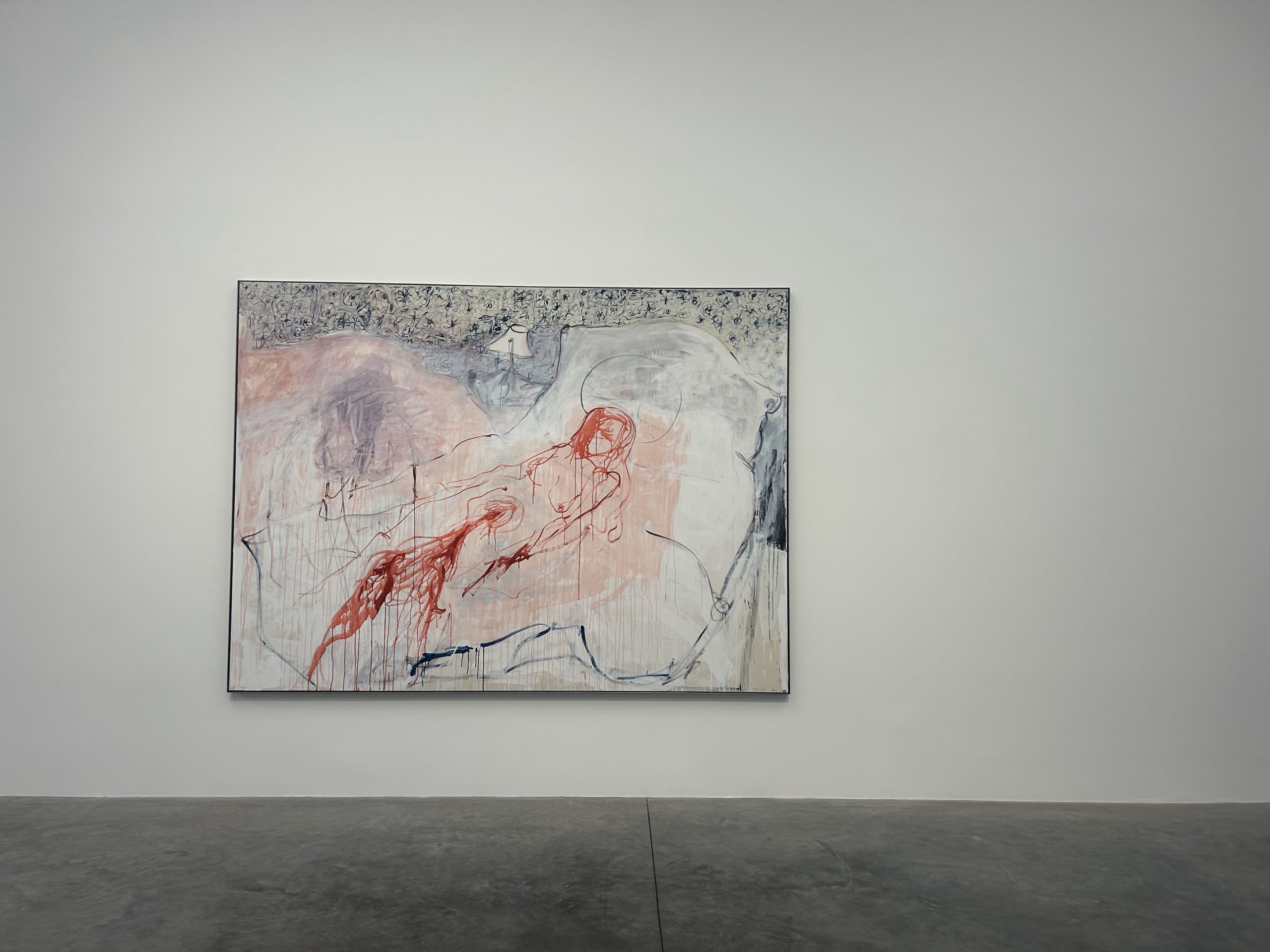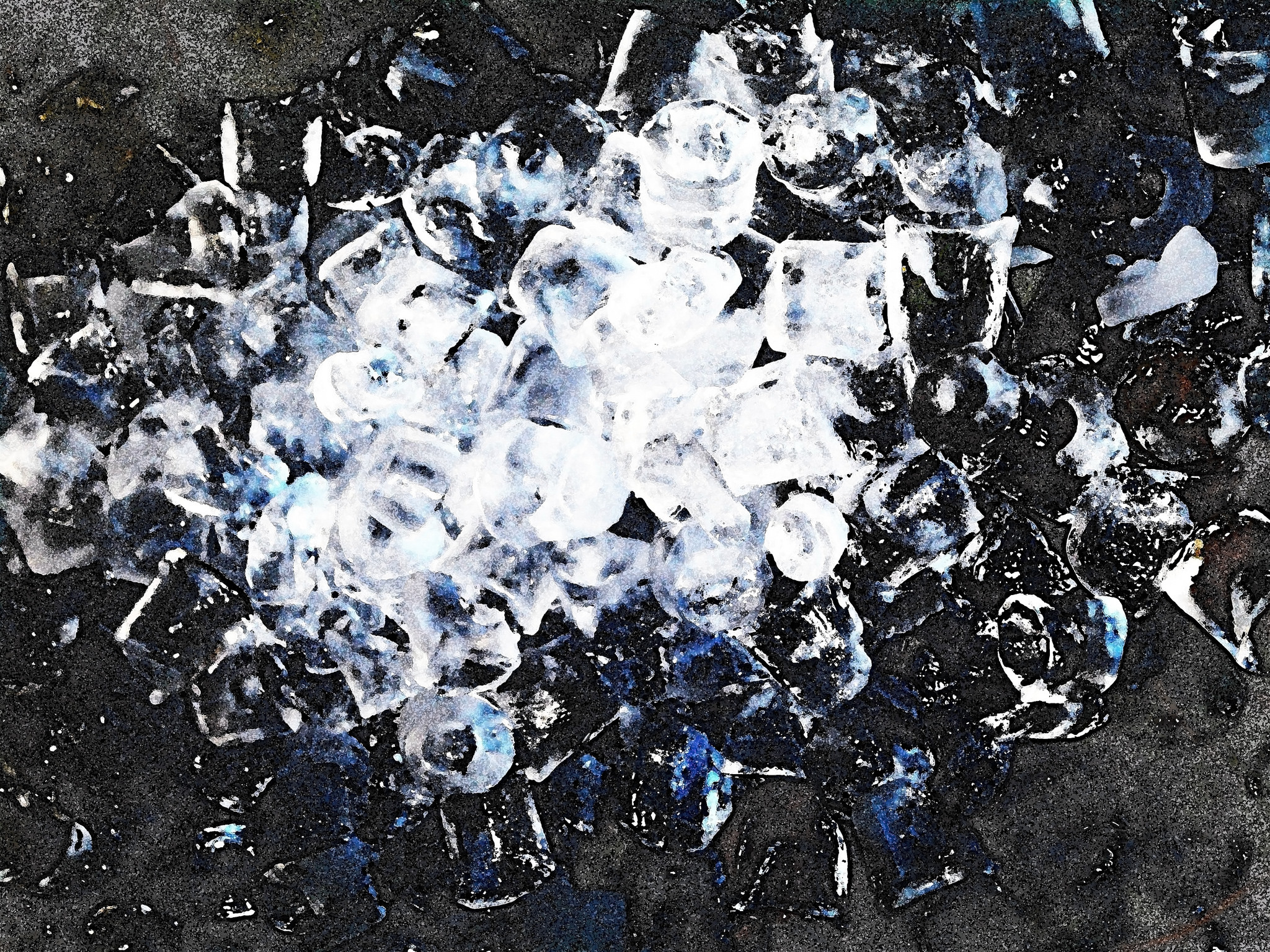
Tracey Emin’s I followed you to the end at The White Cube Bermondsey
As I walk from London Bridge to The White Cube, the sun sets behind me. Streaks of peach-pink peak between the buildings of Bermondsey Street, filled with well-dressed people spilling onto the road and clutching bottles of Estrella. I reckon this is the beer being served at the opening of Tracey Emin’s I followed you to the end, showing from the 19th September to the 10th November.
There is a swarm of people filling the courtyard in front of the gallery. It is loud. There is a queue to enter the show. I’m late and I can’t find my cousin who I’m supposed to be meeting here. Ducking under armpits and dancing round backs I finally find her—by the makeshift bar of collapsible tables covered in white cloth. The beers are out by 18:44 (the show opened at 17:00). My cousin’s friend, who works at the White Cube, disappears and returns with champagne from somewhere behind the scenes. I don’t like it but drink it anyway. More beers arrive and a throng of people, flies to honey, surround the bar. I join them, swiftly double parking with beers from Margate (Emin’s birthplace), where she set up The Tracey Emin Foundation—home to the TKE Studios and T.E.A.R., The Tracey Emin Artist Residency. I sink one of the beers, catch up with my cousin’s friends, and start to get itchy feet. I want to go in.
We are let in through a side door, skipping the queue. Our unfinished beers are carefully placed behind the reception desk, lined up in a neat little row. No drinks allowed in the exhibition. It is busy in here too. The flock of people in the long white corridor leave little space to take in the smaller paintings that adorn the walls of this section. It feels like a thoroughfare. I take a while to adjust, recalibrate. There is no handout, no list of works, no labels on the walls, the viewer is free to move through the exhibition as they see fit. No enforced flow, the curation is not didactic.
Blue and red figures in beds eerily inhabit canvases smaller than laptop screens – I am not used to seeing Emin’s smaller paintings. The last show of hers I saw was the Royal Academy show with Edvard Munch, Tracey Emin/Edvard Munch: The Loneliness of the Soul in 2021. It was mostly large canvases; the first show that made me cry for an hour at a figure on all fours.
In a room surrounded by beautiful renditions of the violence of bed, two young children run in circles. Round and round the crowd they go. The children’s laughter will not be stifled and their feet will not be stopped. Their glee fills me with glee. I glance up at the paintings, and then back to the circles they are running round and round and round and round. Their glee makes the paintings sadder. The danger of the bed, something I’ve made my peace with, suddenly feels tear worthy again. Disassociation clouds the paintings of double figures; these are not two different people. The figures bleak, post violence—not necessarily just—but post-violence post-trauma post-pain at large. Blueness, heaviness, you tuck yourself into bed. You must stay there for days. Your memories heavy, your pain bodily. I remain unsurprised. Figures in pain. Anguish. A physical and emotional violence seeping out through the fervent, seemingly impulsive brushwork of much of her paintings.
Emin’s cats appear throughout the show, a softening presence – they keep watch. Often level with the head or above, they appear protective companions. Attentive and aware of pain, the cats are safer partners than the men referred to in the titular painting I follow you to the end – in which the outline of a figure hovers above a message from Emin to her past lovers. My face contorted when I read, Like a fool I followed you to the end. Like the sad soul that I am. Is it cringe I am feeling?
Emin walks through the room, dressed in a bright pink dress, a long black wool overcoat and black leather boots that sit somewhere between vintage walking and combat. She poses in front of the diptych My Dead Body – A Trace of Life surrounded by a crescent crowd of gallery-visitors. Despite being, I am later told, over an hour and a half late, all seem in awe of her presence. It is magnetic, I too find myself momentarily transfixed. “She’s so famous” my cousin whispers to me, her voice comic, her words sincere. She is, I think. She is just really really fucking famous. I overhear gallery workers discussing the process of putting the show together. Banished from the gallery whilst Emin was there. That they would have been fired for asking for a picture with her. Tracey Emin is really famous. And like any other really famous person, she acts like it.
A man dressed in a bright yellow get-up (I’m later told he is a Soho staple), long hair and adorned with atypical accessories poses in front of the diptych after Emin. He holds an old paint-by-numbers box and a golden frame with a cover of an old copy of June and School Friend is attached to his body by thick, off-white, slightly shiny rope. A woman comes over and tells him to move away from the artworks, that he was too close—I had been thinking the same thing. Fatal error, it seems. “I’m not a child I don’t like to be corrected. Keep your opinions to yourself or leave the building,” is his. She buckles, stumbles over her words, apologising but standing her ground before returning to her friends slightly flustered.
I carry on walking through, keeping my opinions to myself, pausing at some paintings, and walking past others. The exhibition is big, painting after painting, for some reason her signature rawness doesn’t hit me. My skin does not sting at her art as it did before. I look, I think, I compute. I do not feel as much.
Then we enter the small auditorium. Projected is a video of Emin’s belly, the juncture where her stoma bag attaches is unleashed, unconnected—the rings of its suction surrounding this bloody, raw, red orifice. Emin filmed this herself. The camera work is shaky, the movement is not stylized, that is, natural. My heart rate drops, the noise around me muffled, I am within the rawness that first attracted me, as an adolescent girl, to Emin’s work.
Each piece I see after this feels different. Her bronze sculptures, some massive some smaller, feel different. I go to the loo, and realise I’ve been free bleeding. There is blood smudged on my inner thigh, it somehow feels fitting. Finally, I find respite from the anguish in one painting. It is big and feels laden with care. Two figures that feel like two figures. Gently spooning, their faces are not obscured. The red does not evoke deep anguish, searing pain and all-consuming internal scarring this time; rather, tenderness.
Words by Eloise Cooke. Image Courtesy of Eloise Cooke.









